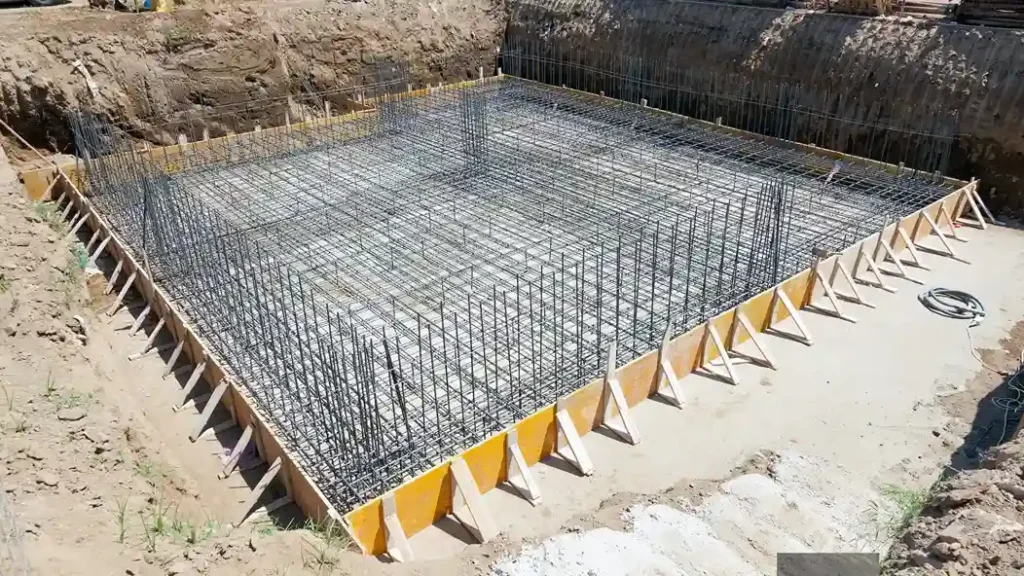
Types of Sand Used in Construction: A Complete Guide
Types of sand used in construction are essential in any building project. When it comes to construction, sand is an essential material. The foundation and roads built will not be complete without the contribution of sand used in construction. Despite the fact that sand appears to be the most ordinary material, there are many different types of sand, including those categorized based on size, texture, and origin. Understanding which sand is ideal for construction can make all the difference in ensuring that your project will last. This blog will take a look at different grades of sand, the difference between m sand and p sand, and what to look for when choosing construction sand for a project.
Why is Sand Important in Construction?
In concrete and mortar production, sand is the quintessential ingredient. It assists in holding other materials together for strength and gives them the texture needed. The size of the sand determines the final quality of the mix. Sand’s classification is based on the size of the particles; each type will then be used for a specific purpose in construction.
For further details on the significance of sand in construction, click Builders Mart.
Types of Sand Used in Construction
There are various types of sand available for building construction, and they are specifically suited for particular types of projects. For further insights into different types of construction sand, visit UltraTech Cement.
Let’s discuss the most common types of sand used in construction:
1. River Sand (Natural Sand)
River sand is one of the most frequently found construction sand, found in almost every construction project. It gets the smoothness with the wash from water naturally along with the process of filtration it undergoes with water flow. It’s most commonly used due to its fine clean grains for mixtures of concretes
Uses:
- Concrete mix
- Mortar mix
- Walls Plastering
Pros:
- Fine texture allows great plastering.
- Well available.
- Relatively easier in work
Cons:
- At times too costlier due to unavailability.
For further information on river sand’s properties, check India Mart.
2. M Sand (Manufactured Sand)
M sand or manufactured sand is a substitute for river sand. It is prepared by crushing the rocks, generally granite, into smaller pieces to give it the appearance of natural sand. M sand has gained acceptance because of the scarcity of natural sand. It is an eco-friendly product and is used widely in concrete production.
Uses:
- Concrete production
- Bricks and blocks
- Roads
Pros:
- Quality is uniform
- Environment friendly
- Cost-effective in areas where natural sand is scarce
Cons:
- Sometimes contains more angular particles, which affects the texture of mortar or plaster
For further knowledge about the advantages of M sand, read Alpha Sand.
3. P Sand (Plaster Sand)
P sand is another name for plaster sand. P sand is finer and smoother than M sand. This is used for plastering and finishing work. Fine grains enable more smooth applications with a more uniform finish on the walls and ceiling. P sand is used mainly where a surface has to be smooth.
Uses:
- Plastering
- Finishing work on the walls
- Building of high-class surfaces
Pros:
- Fine texture for smooth finish
- Best suited for plastering
- It offers an even surface
Cons:
- Not suitable to produce concrete due to its grain being too small
For further guidance on using P sand for plastering, see RBSSN.
4. C Sand (Crushed Sand)
C sand is the other alternative for natural sand. It is made by crushing the rocks and has rough angular grains. It is used where the concrete strength is a major issue.
Uses:
- Concrete production
- Road construction
- Foundations
Pros:
- It is size uniform
- It imparts strength to the concrete mixture
Cons:
- The texture of this type of sand is coarse, and hence it is not suitable for plastering or finishing work.
- Some locations charge a higher amount compared to natural sand
For further explanation of C sand’s uses in concrete, visit UltraTech Cement.
5. Sea Sand
Sea sand is obtained from the sea or coastal region. The grain is fine but impurities in it such as salt are harmful, thereby affecting the concrete durability as well as that of other construction materials. In light of this factor, salt contained in the sea sand makes it generally unpopular for use in concrete works. Nevertheless, the same may be used in some applications.
Uses:
- Fillers
- Base for road
Pros:
- readily available along the coastline
- Low cost
Cons:
- Salt content can weaken concrete
- May require additional treatment to remove impurities
For further exploration of sea sand applications, check CFlo.
Difference Between M Sand and P Sand
One of the most often asked questions within the construction world is what is m sand and what is p sand. While these both are being used for two different purposes, the characteristics will vary from each other.
- M Sand: M Sand has been found coarser and its utility is very extensive in making the concrete mixture as it’s composed of angular aggregates that offer quite a proper binding with the cement, especially required for structuring purposes.
- P Sand: Whereas the finer and even sand is of size P; It is specifically being used as good plastering for finishing off, and therefore in its finely done texture; better applications come giving a shinning finish due to its minimal granularity.
For further comparison between M sand and P sand, click Alpha Sand.
Sand Size and Its Impact on Construction
The size will determine the effectiveness in construction. Sand particles come in all different sizes. The size of the particles determines how the sand can be used. According to the actual use, in the construction sector, sand is mainly classified into:
- Fine sand: It is where all the particles are smaller than 0.075 mm. This is ideal for plastering and finishes.
- Medium Sand: The particles are between 0.075 mm and 0.425 mm. This is mostly used in concrete mixes.
- Coarse Sand: The particles are greater than 0.425 mm. This sand is usually used for brickwork and as a base for concrete.
Each grade of sand has its specific application based on its texture and size, so it is essential to choose the right one for the job. For further details on sand sizes and their uses, read JK Cement.
Which Sand is suitable for Construction?
While constructing, the quality of sand to be used depends entirely on the type of the project and other requirements of work. M Sand and C sand are used predominantly for concrete purposes, whereas, P sand would be the perfect one for Plastering Works. River sand, though one of the best with respect to smoothness and texture, is not always available in quantities required because of environmental issues. In such cases, M sand is said to be the best option.
Conclusion
In a nutshell, selecting the suitable size and the right type of sand is paramount in ensuring your construction project to be of great quality and longer lasting. Whether you are in the market for M sand, P sand, or C sand, knowing the types of construction sand and their usage can help make good decisions. Therefore, you consider the grade of sand, differences between M sand and P sand, and the list goes on, ensuring your construction project has a solid foundation.

FAQs About Types of Sand Used in Construction
1. What is the difference between M sand and P sand?
M sand is coarser and used mainly for concrete production, while P sand is finer and used for plastering and finishing work.
2. Which type of sand is most suitable for construction?
The answer to this is entirely dependent on the work. In cases of concrete production, M sand or C sand are ideal. When it comes to plastering and finishing, P sand is preferred for its smooth finish.
3. Whether sea sand could be used for construction purposes?
The sea sand may be used to fill materials, road base, but not preferred for concrete mixing since it contains many salts that lead to weakening the concrete.



